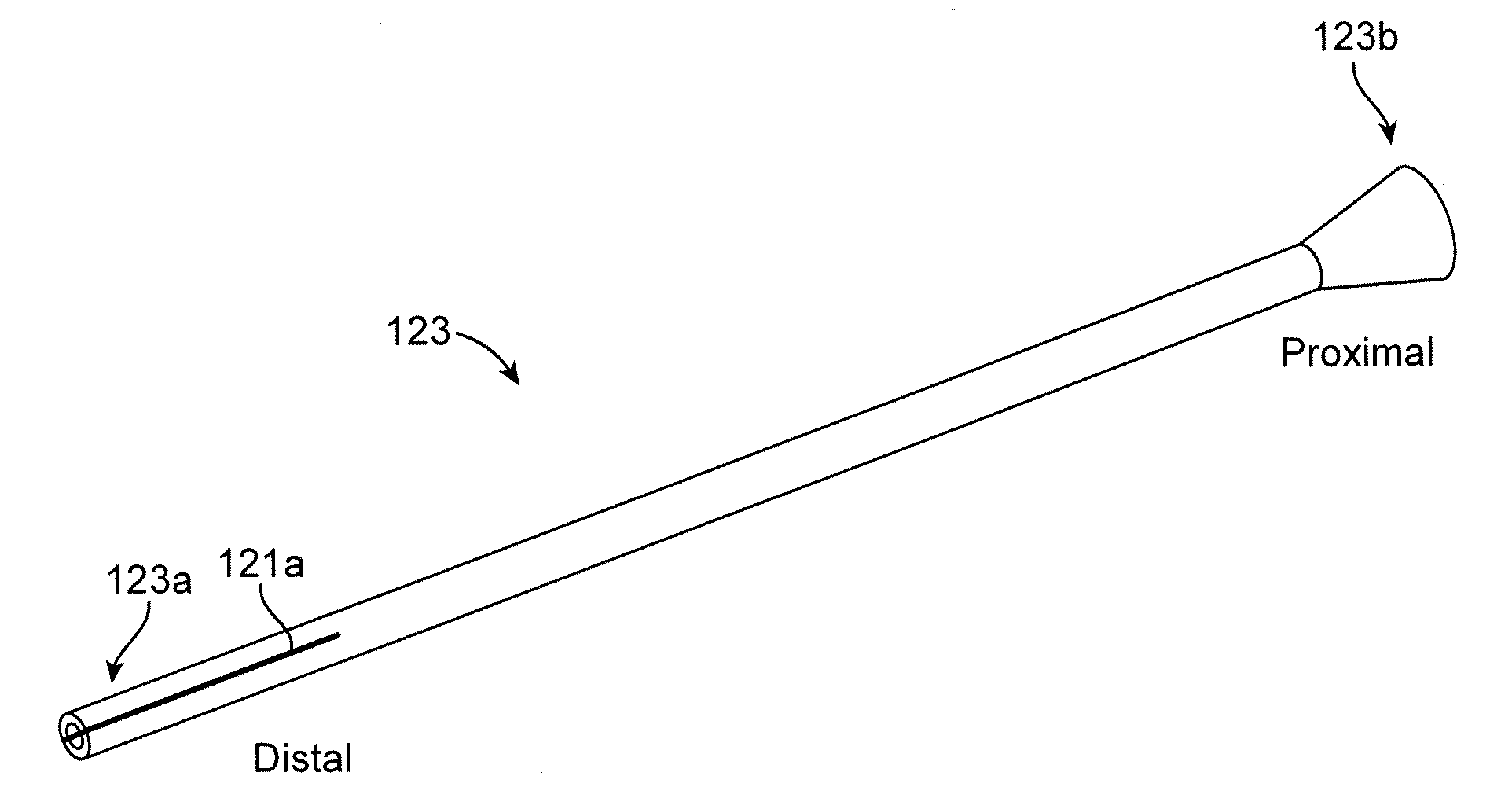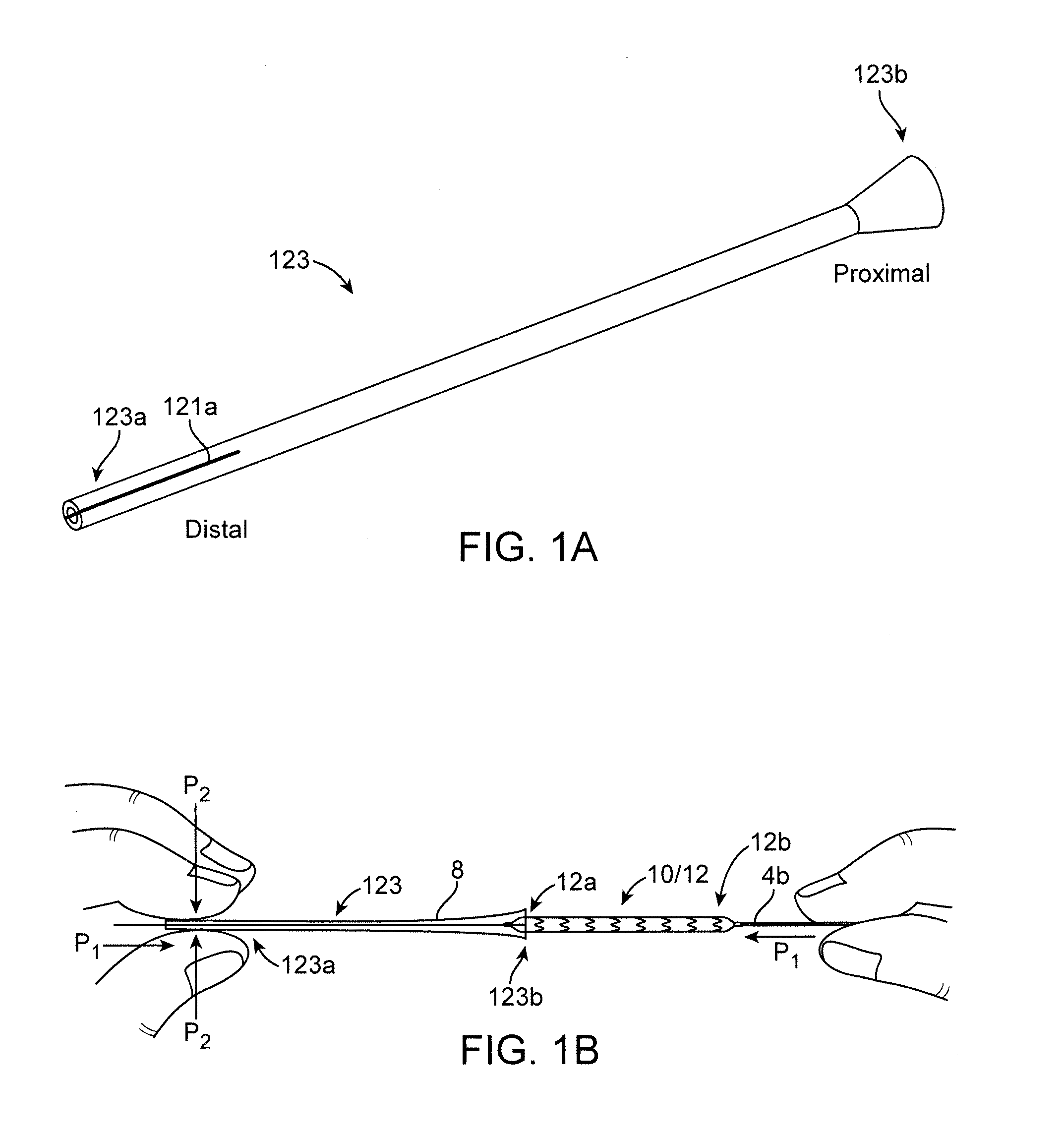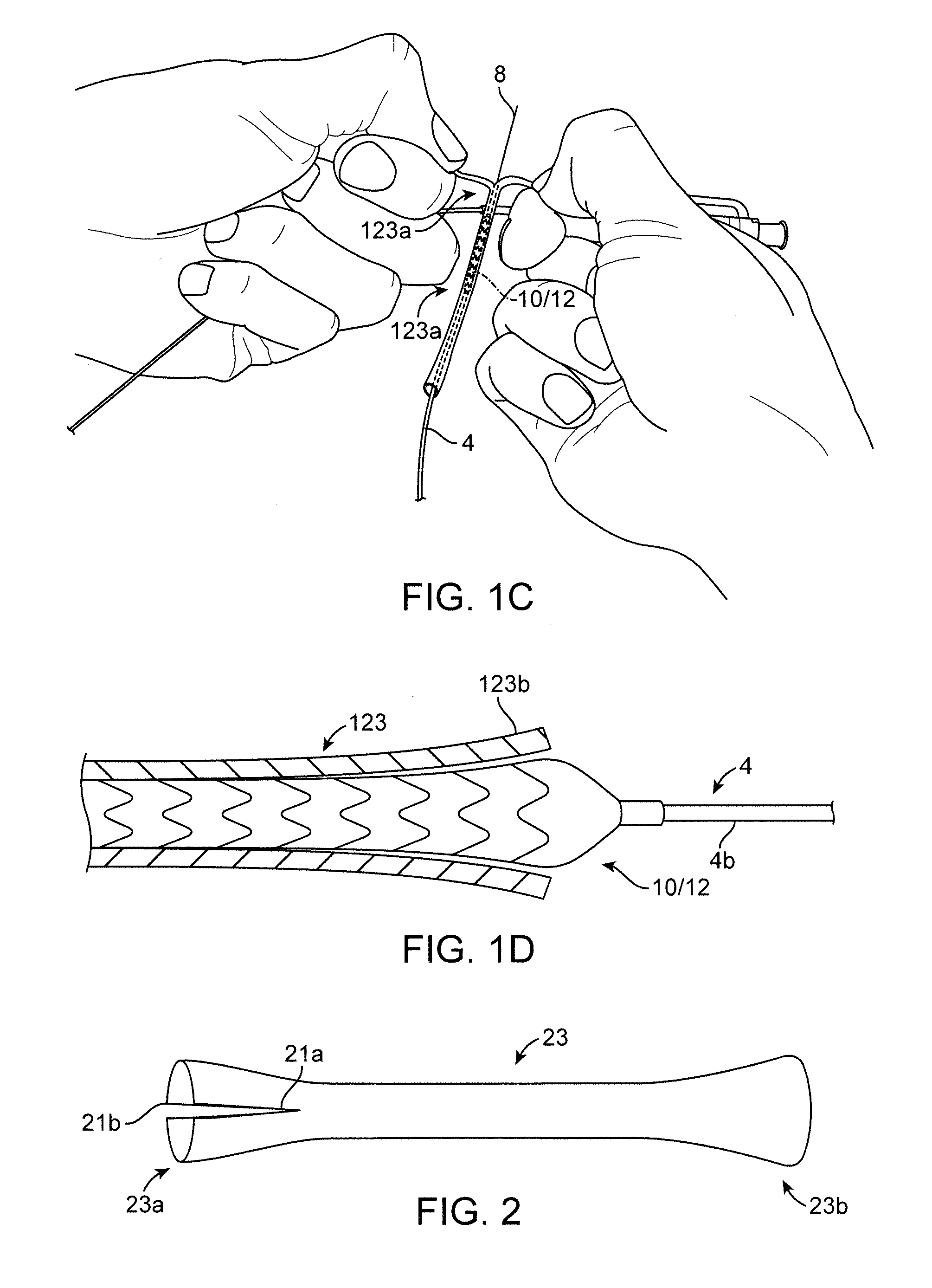Sheaths Reducing Recoil and Loss of Retention for Polymer Scaffolds Crimped to Balloons
a polymer scaffold and crimping technology, applied in the field of medical devices, can solve the problems of excessive elastic recoil, failure or collapse of the balloon, disruption of the balloon, etc., and achieve the effect of reducing the recoil and avoiding the adverse effects of balloon deployment and balloon integrity
- Summary
- Abstract
- Description
- Claims
- Application Information
AI Technical Summary
Benefits of technology
Problems solved by technology
Method used
Image
Examples
Embodiment Construction
[0047]A medical device according to a preferred embodiment includes a polymer scaffold formed from a radially expanded or biaxially expanded extruded PLLA tube, which is crimped to the balloon of a balloon catheter. The scaffold is laser cut from the expanded tube. The diameter of the tube is preferably selected to be about the same, or larger than the intended deployed diameter for the scaffold to provided desirable radial strength characteristics, as explained earlier. The scaffold is then crimped onto the balloon of the balloon catheter. Preferably, an iris-type crimper is used to crimp the scaffold to the balloon. The desired crimped profile for the scaffold is ½ or less than ½ of the starting (pre crimp) diameter of the expanded tube and scaffold. In the embodiments the ratio of the starting diameter (before crimping) to the final crimp diameter may be 2:1, 2.5:1, 3:1, or higher.
[0048]The pre-crimp memory in the scaffold material following crimping will induce some recoil when ...
PUM
| Property | Measurement | Unit |
|---|---|---|
| length | aaaaa | aaaaa |
| length | aaaaa | aaaaa |
| length | aaaaa | aaaaa |
Abstract
Description
Claims
Application Information
 Login to View More
Login to View More - R&D
- Intellectual Property
- Life Sciences
- Materials
- Tech Scout
- Unparalleled Data Quality
- Higher Quality Content
- 60% Fewer Hallucinations
Browse by: Latest US Patents, China's latest patents, Technical Efficacy Thesaurus, Application Domain, Technology Topic, Popular Technical Reports.
© 2025 PatSnap. All rights reserved.Legal|Privacy policy|Modern Slavery Act Transparency Statement|Sitemap|About US| Contact US: help@patsnap.com



